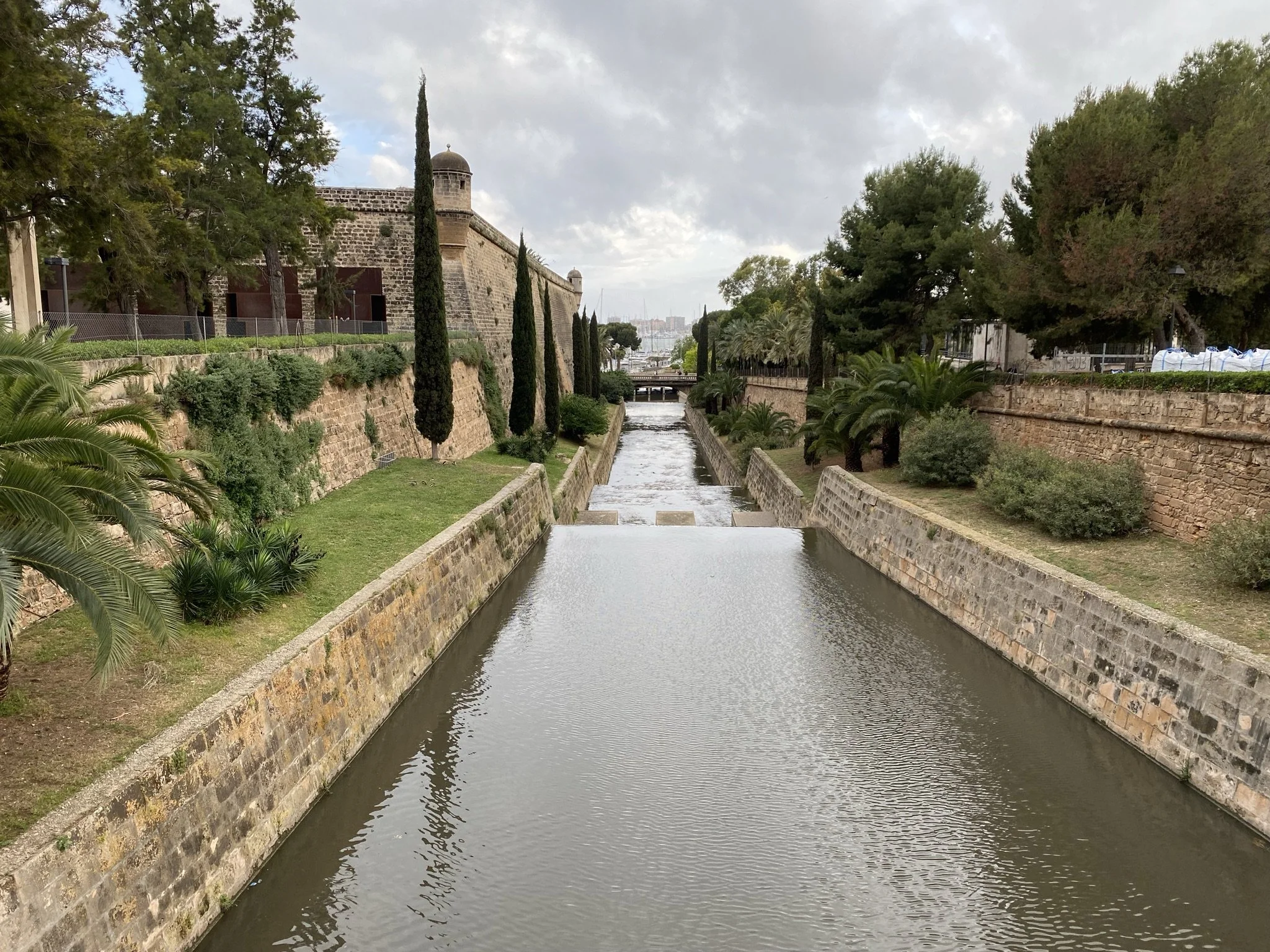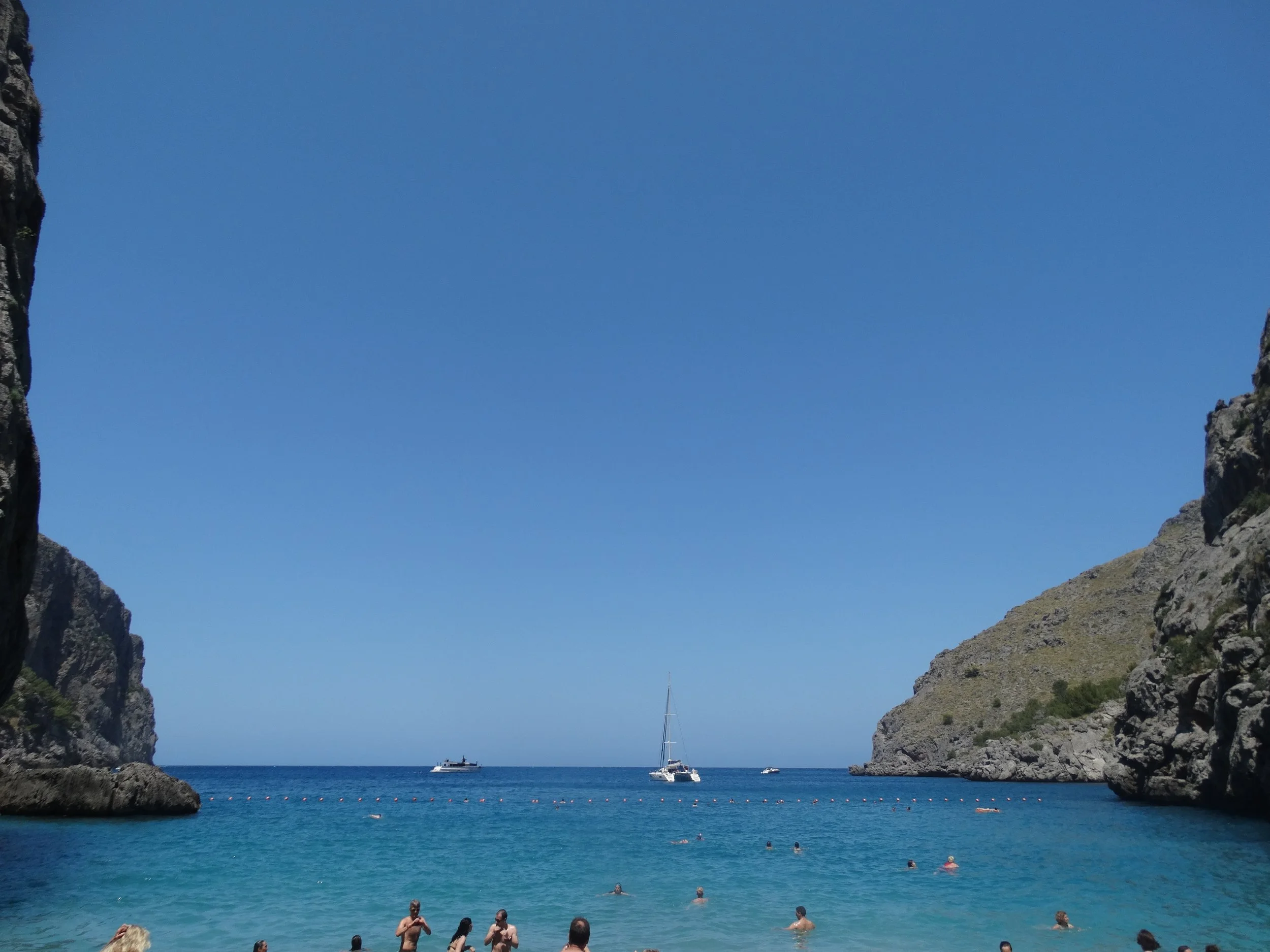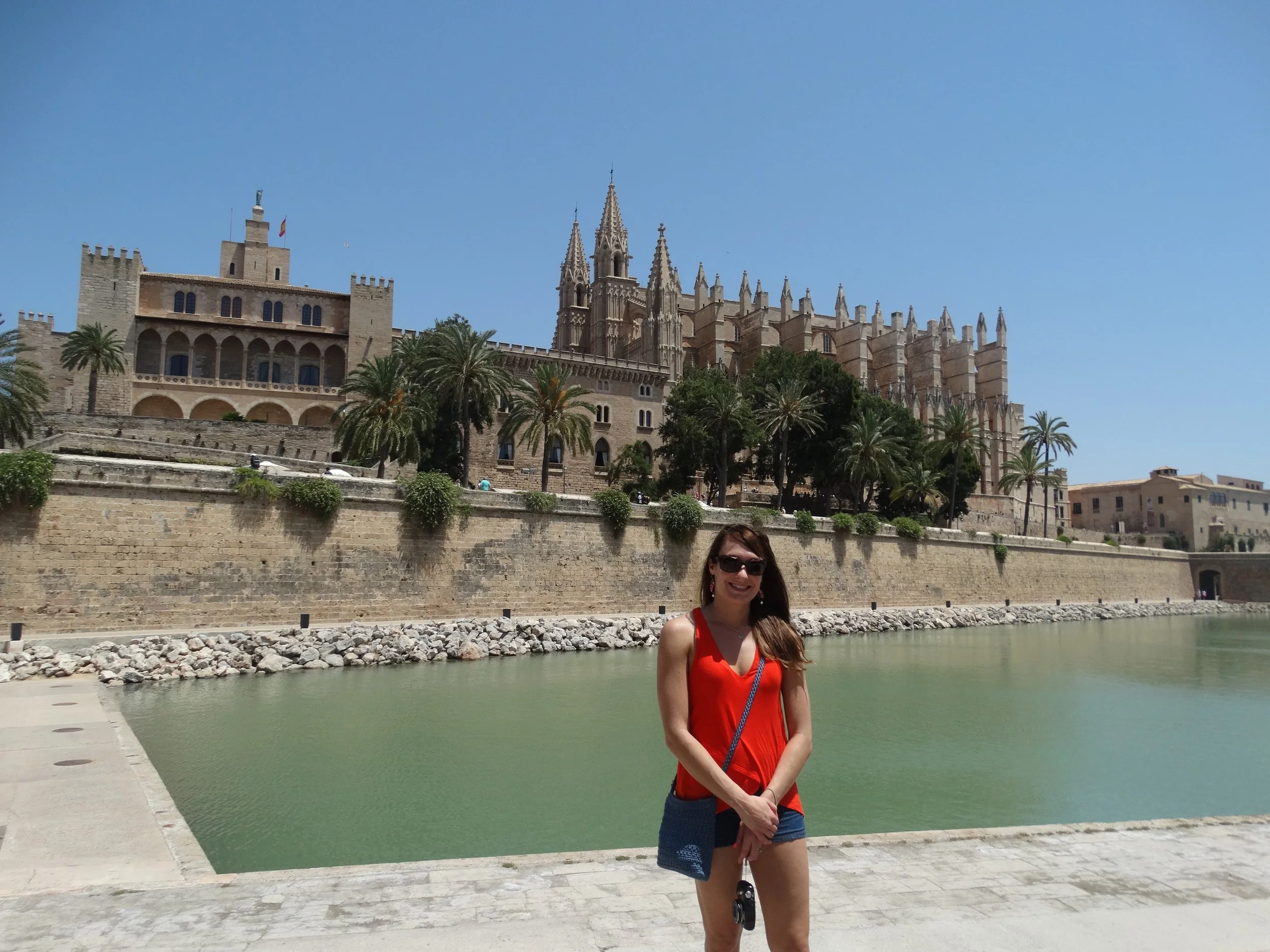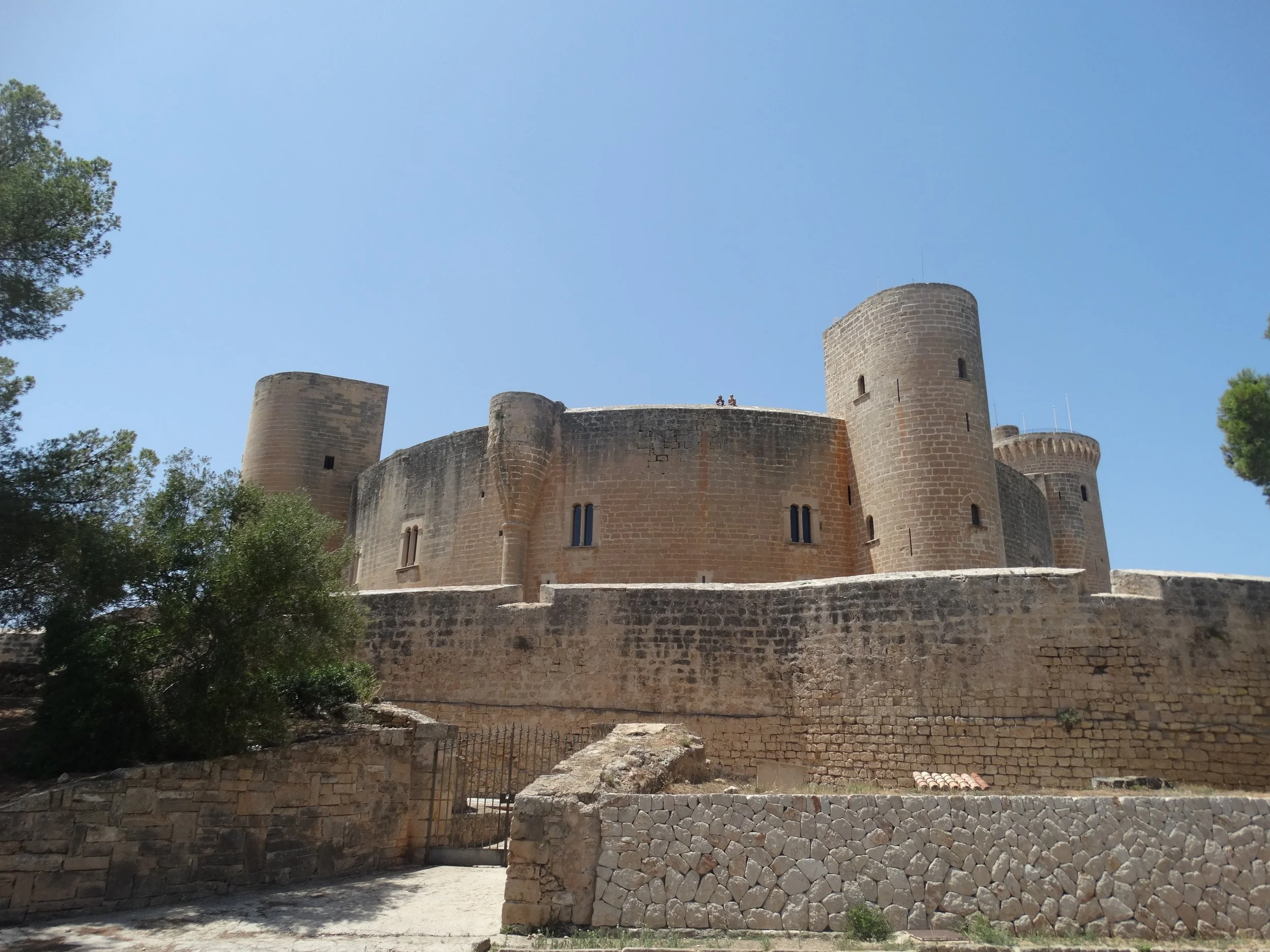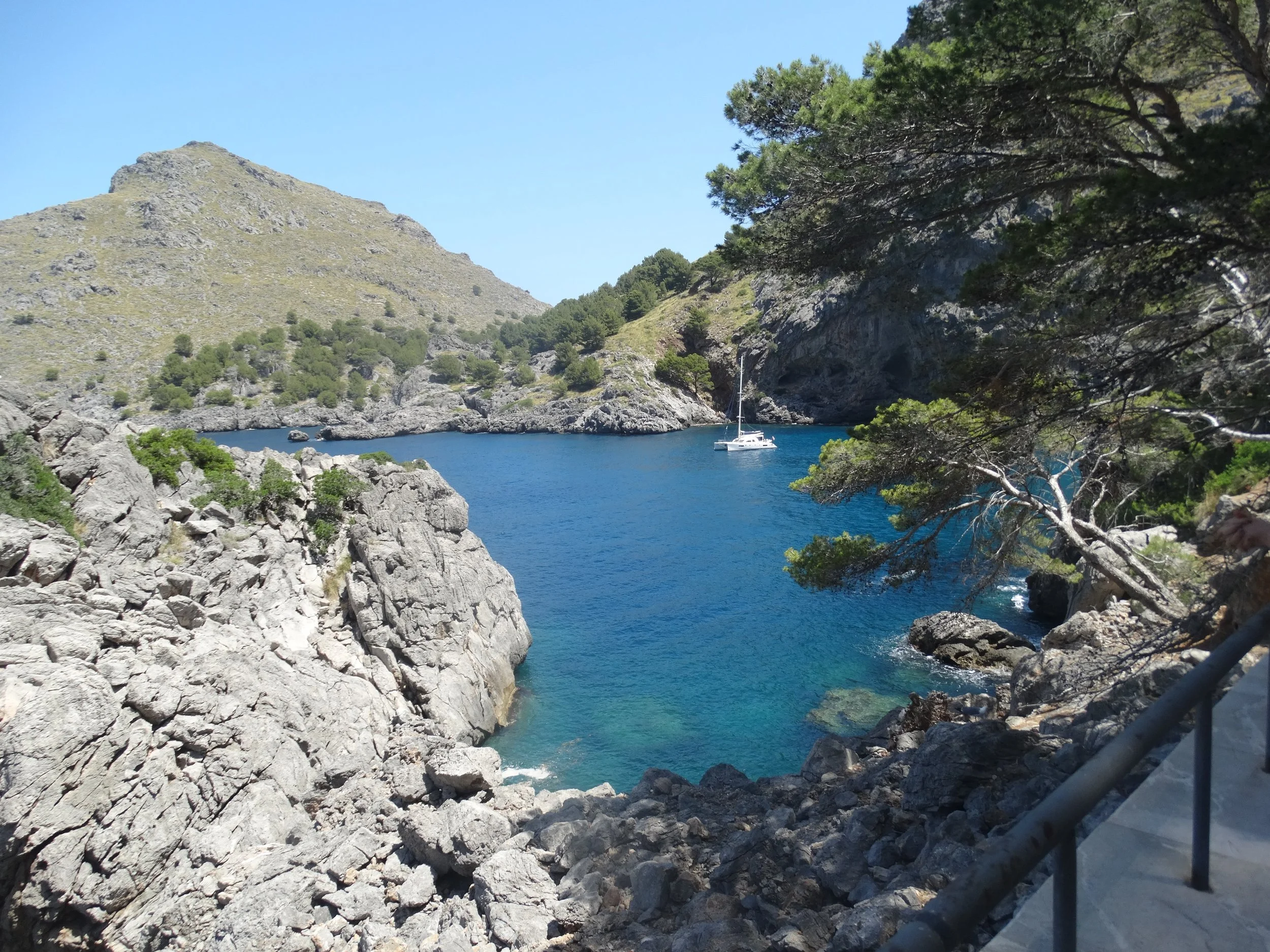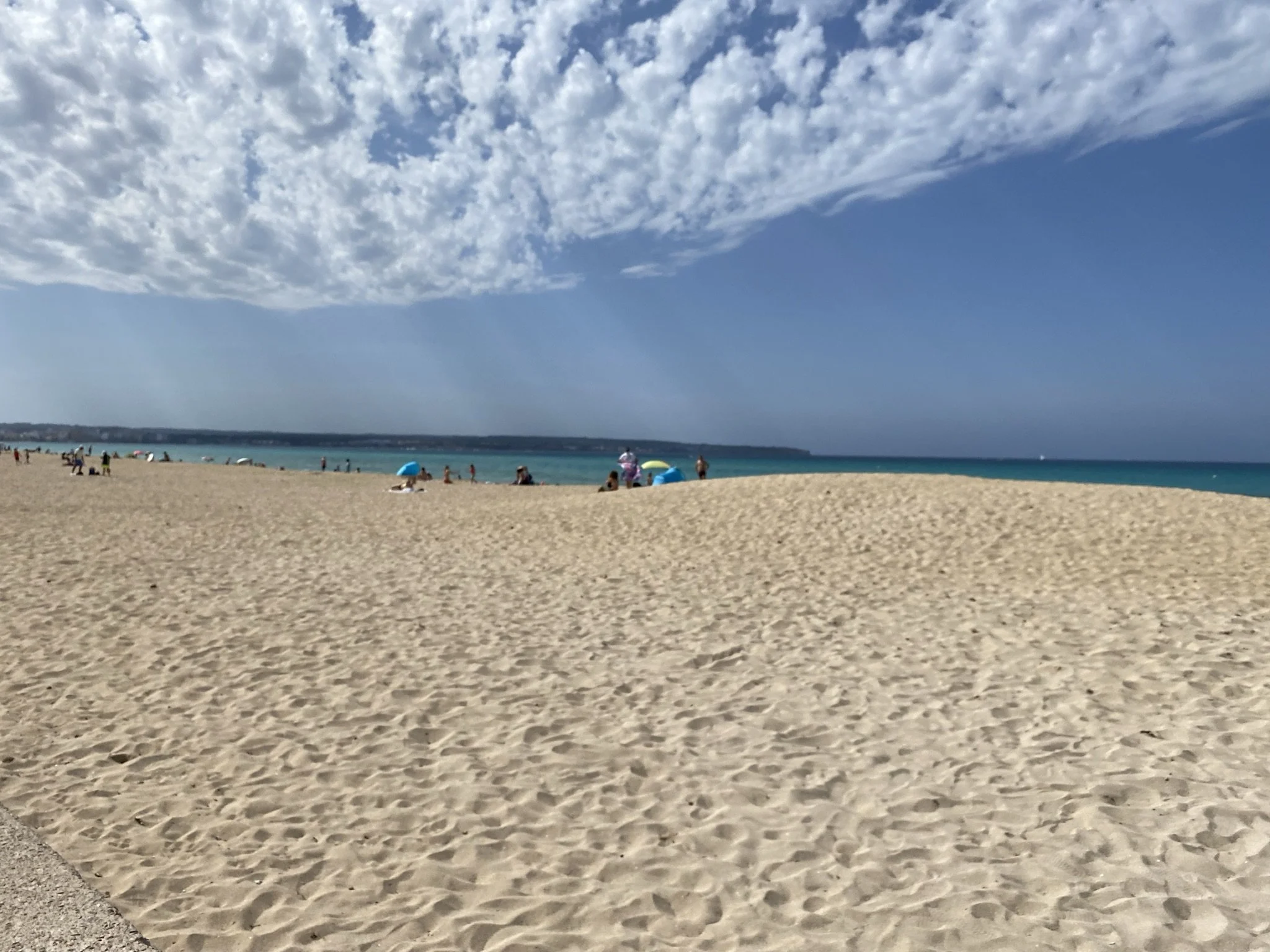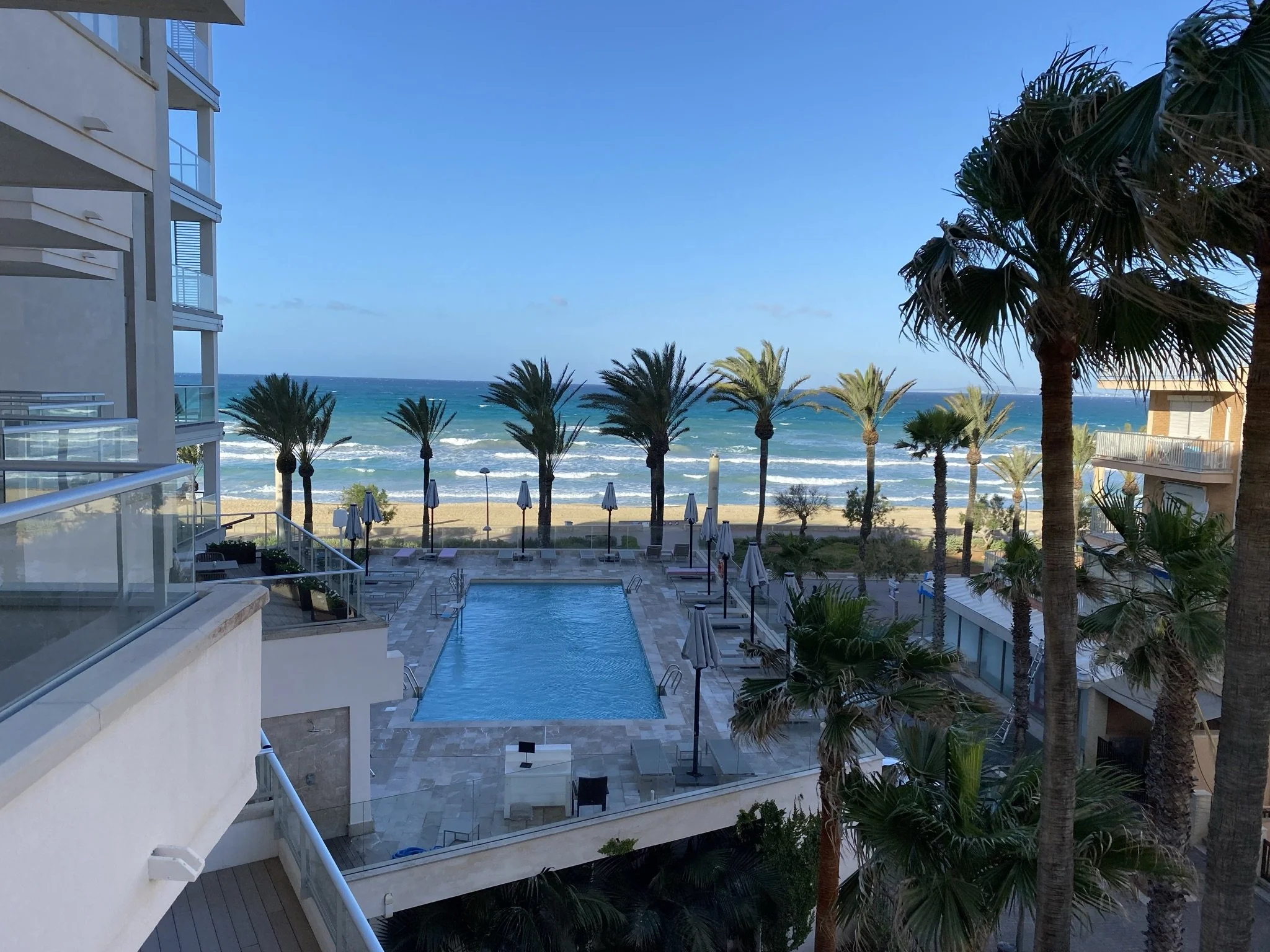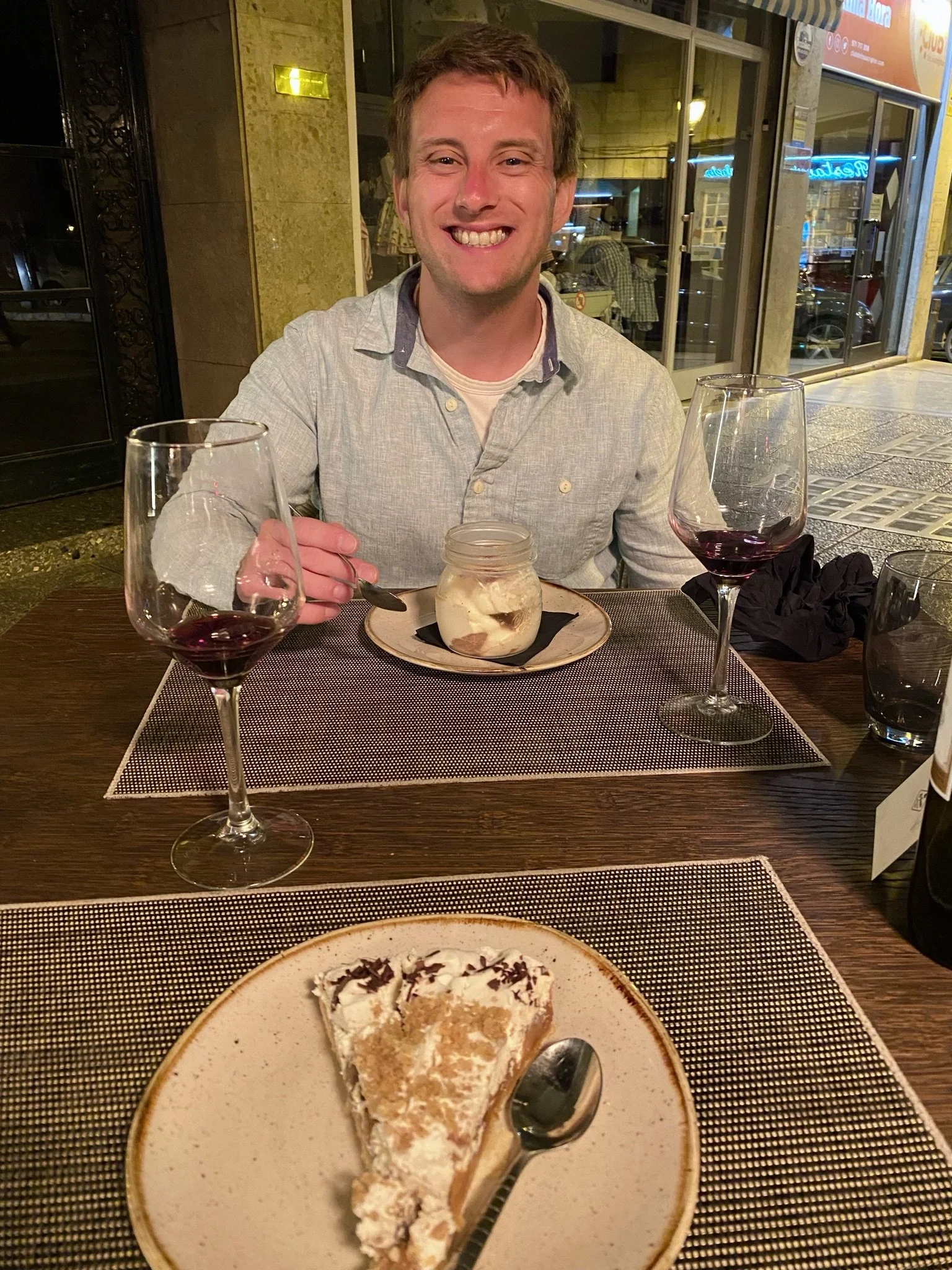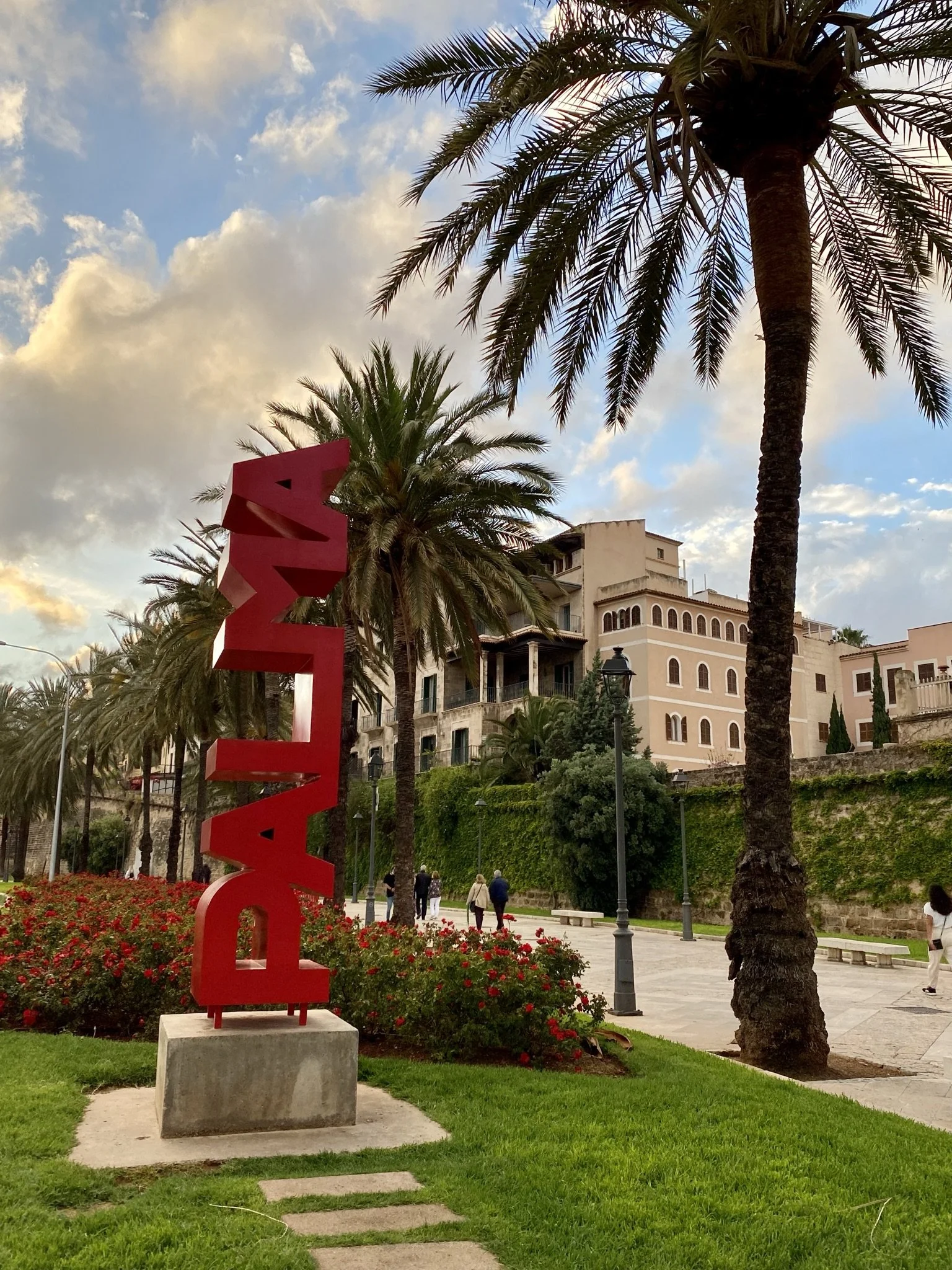The Ultimate 4-Day Mallorca Getaway: Sun, Sea, and Spanish Splendor
Cathedral of Santa Maria of Palma (La Seu)
Welcome to your comprehensive Mallorca travel guide to experiencing the best of Mallorca in just four magical days. This stunning Balearic Island offers a perfect blend of pristine beaches, rich history, mouthwatering cuisine, and unforgettable adventures. Whether you're lounging on golden sands or exploring ancient streets, Mallorca promises memories to last a lifetime. We love visiting Mallorca for the amazing white sand beaches, the beautiful promenades, and the different vibes. You can experience a laid back beach vacation, enjoy the clubs and party scene for a bachelor (stag)/bachelorette (hen) party, have a family friendly gathering, a romantic getaway, and everything in between. While Mallorca has touristy areas, it is large enough where you can find plenty of local flavor as well. Mallorca is a stunning island that we love to return to and we hope you will enjoy experiencing this island as much as we do!
Looking for a quick guide? Check out our itinerary only blog post!
What Makes Mallorca Special?
Mallorca (or Majorca) is the largest of Spain's Balearic Islands, nestled in the azure waters of the Mediterranean Sea. What sets this island paradise apart is its remarkable diversity packed into a relatively small area. Within a single day, you can transition from relaxing on beautiful beaches to hiking dramatic mountain landscapes, exploring ancient villages, and dining in a sophisticated downtown city.
The island's unique charm comes from its blend of authentic Spanish culture with cosmopolitan influences—a result of its long history as a Mediterranean crossroads. While some Mediterranean destinations can seem a bit overly touristy and built up, Mallorca has preserved much of its natural beauty and cultural heritage while offering modern amenities and luxuries (but yes you can still definitely find the tourist traps).
With over 300 days of sunshine annually, a stunning 550km (approximately 342 mi) coastline dotted with hidden coves, the impressive Serra de Tramuntana mountain range (a UNESCO World Heritage site), and the vibrant capital city of Palma, Mallorca offers something for every type of traveler—from adventure seekers and culture enthusiasts to food lovers, to party-goers, and beach connoisseurs.
Palma de Mallorca
A Brief History of Mallorca's Colorful Past
Mallorca's story is as captivating as its landscapes! The island's strategic Mediterranean location made it a coveted prize throughout history:
Prehistoric Era: The first settlers arrived around 3000 BCE, leaving behind impressive megalithic structures called talayots that you can still visit today.
Roman Rule: The Romans conquered Mallorca in 123 BCE, establishing Palma (then called Palmaria) as an important port.
Moorish Golden Age: Perhaps the most influential period began in 902 CE when Islamic rulers transformed the island with sophisticated irrigation systems, stunning architecture, and advanced agricultural techniques—many of which survive today in Mallorca's terraced landscapes and water features.
Christian Reconquest: In 1229, King James I of Aragon reclaimed the island for Christendom, beginning centuries of Spanish rule that significantly shaped Mallorca's culture, language, and architecture. The magnificent Palma Cathedral stands as a testament to this era.
Tourism Boom: Mallorca's modern transformation began in the 1950s when it emerged as a premier Mediterranean tourist destination, evolving from a sleepy agricultural island to the sophisticated vacation hotspot we know today.
This layered history is visible everywhere—from Roman ruins and Moorish baths to medieval castles and modernist architecture—making Mallorca a living museum where the past is beautifully integrated with the present.
Weather, When to Visit, and What to Pack
Mallorca's Mediterranean Climate
Mallorca enjoys a classic Mediterranean climate with hot, dry summers and mild, slightly wetter winters. Here's what to expect seasonally:
Summer (June-August): Peak season brings temperatures of 25-32°C (77-90°F), very little rainfall, and gloriously long days. Perfect beach weather, but expect crowds and higher prices.
Spring (March-May) and Fall (September-October): These shoulder seasons offer ideal conditions with comfortable temperatures between 18-25°C (64-77°F), fewer tourists, and reasonable prices. Many locals consider these the best times to visit.
Winter (November-February): The quietest season brings mild temperatures averaging 10-17°C (50-63°F) with increased rainfall, especially in December and January. While not beach weather, it's excellent for hiking, cycling, and cultural experiences.
Best Time to Visit
For the optimal balance of good weather and smaller crowds:
Best Overall Experience: Mid-April to mid-June or September to early October (our personal favorite time to visit was May)
Best Beach Time: June through September
Best Budget Trip: November to March (excluding Christmas/New Year)
Best for Active Adventures: February to May or September to November
What to Pack
For summer visits:
Lightweight, breathable clothing
Multiple Swimsuits (Matt is a huge fan of Chubbies swimsuits!)
Sun protection (high SPF sunscreen, sunglasses, hat)
A stylish sarong that can double as a scarf/wrap for your shoulders for cooler evenings
One light sweater for cooler evenings (or a cover up or light jacket)
Comfortable walking shoes or a really comfy set of sandals or flip-flops
Bring a water-proof drybag if you are planning on going boating or heading to the beach
For spring/fall visits:
Layers (t-shirts, light sweaters, light jacket)
Swimwear (beaches are still enjoyable, especially in September)
Rain jacket or small umbrella
Comfortable walking shoes
For winter visits:
Layers for variable temperatures
Light jacket or coat
Scarf and light gloves
Additional Items to Bring:
Foldable duffle bag - so you can bring back souvenirs!
A good set of packing cubes can really help you stay organized - we really like these packing cubes
Ash swears by this small packable hair straightener
A good travel backpack that gives you the space to pack and travel with ease.
Portable charger– many attractions are outdoors, and charging spots are limited.
We love our Samsonite luggage. We’ve had so many issues with fabric bags ripping or snagging over the years that we switched to the hard cover bags and have had no issues!
Palma de Mallorca
Things to Know Before You Go
Practical Tips
Language: While Spanish (Castilian) is the official language, Catalan is widely spoken (the local dialect is called Mallorquín). English (and German) is common in tourist areas but learning a few basic Spanish phrases will enhance your experience and is appreciated by locals.
Currency: The Euro (€) is the currency. Credit cards are widely accepted, but carry some cash for smaller establishments and rural areas.
Tipping: Not obligatory but appreciated. For good service, round up the bill or leave 5-10% in restaurants. Taxi drivers typically expect you to round up to the nearest euro.
Siesta: Many businesses close between 2-5pm, especially in smaller towns. So if you plan on exploring outside of the main city of Palma de Mallorca, consider bringing a lunch or plan accordingly!
Water: Tap water is safe but may have a mineral taste. Many locals and tourists opt for bottled water.
Electricity: Standard European 220V with two-pin plugs. Bring adapters if needed.
Tourist Tax: Mallorca charges a Sustainable Tourism Tax ranging from €1-4 per person per night depending on your accommodation's star rating.
SIM cards or eSIM: We recommend getting a local SIM card or buying an eSIM such as through Airalo (use code MATTHE6398 to get $3 off)
How many days do I need in Mallorca? We would recommend at least 4 days in Mallorca, but 5-6 is ideal! Especially if you plan on exploring and visiting other parts of the island!
Tourist Resources
Hop-On, Hop-Off Bus: Palma offers an excellent bus tour with routes covering major attractions. It's a great first-day orientation (€20 for a 24-hour ticket).
Palma Pass: Worth considering if planning to visit multiple attractions in the capital. Includes public transport and entry to main sights.
Tourist Information Centers: Located throughout the island, with the main office in Plaça de la Reina, Palma.
Emergency Number: 112 for all emergencies.
Cultural Notes
Pace of Life: Mallorca runs on "island time"—service may be slower than you're used to. Embrace the relaxed Mediterranean lifestyle!
Meal Times: Locals eat lunch around 2pm and dinner rarely before 9pm. Many restaurants won't open for dinner until 8pm. You may want to pack or find some snacks if you aren’t eating during those times.
Beach Etiquette: Topless sunbathing is common but not universal—make sure you know your surroundings and embrace the experience. Complete nudity is only acceptable on designated nude beaches.
Dress Code: While beach attire is fine for the promenade, cover up when entering shops, restaurants, and especially churches.
Getting Around Mallorca
Mallorca offers several transportation options to suit different travel styles:
Public Transport
Buses: TIB operates an extensive network covering most of the island. The main hub is at Plaça d'Espanya in Palma. Service is reliable in populated areas but limited in rural regions and on Sundays.
Trains: The vintage train from Palma to Sóller is a tourist attraction in itself—a wooden electric train that's been running since 1912 through stunning mountain scenery. We loved this wooden train as it slowly crept past amazing scenery and orange groves! Regular commuter trains run from Palma to Inca, Sa Pobla, and Manacor.
Palma City Transportation: The capital has an excellent bus network and a useful metro line connecting the city center with the university and nearby towns.
Driving
Renting a car gives you the most freedom to explore at your own pace and reach hidden gems away from tourist hubs. Important notes:
Drive on the right side
Main roads are excellent, but mountain and rural roads can be narrow and winding, be sure to drive slow
Parking in Palma can be challenging—consider staying at hotels with parking
Traffic can be heavy during peak season, especially on coastal roads, plan on journeys taking longer than anticipated - just go with the Mediterranean island flow!
Taxis & Ride Sharing
Taxis are readily available in tourist areas and can be booked by phone
Fares are regulated and relatively reasonable for short distances
Uber is available on the island and easy to use, especially around Palma. If you plan on going out into more remote or rural areas, you may want to opt for a taxi as you may end up waiting awhile for an Uber.
Another ride-sharing service is Cabify - similar to Uber but more widely available in Palma and Spain in general. Be sure to download and set-up the app ahead of time!
Cycling
Mallorca is a cycling paradise with excellent infrastructure:
Many hotels cater specifically to cyclists
Numerous bike rental shops offer everything from city cruisers to professional road bikes
The island attracts professional teams during training season (winter/spring)
For Your 4-Day Trip
For a 4-day stay, we recommend:
Using public transport if focusing mainly on Palma with perhaps one or two organized day tours especially if it is your first time to Mallorca. You can opt to take full or half day tours through Viator or GetYourGuide.
Renting a car if you plan to explore multiple regions of the island independently - this gives you the most flexibility to explore (be sure to download offline maps!)
Booking a rental car well in advance during peak season - especially if you need an automatic (and be sure to specifically identify that you need an automatic transmission car - and again be sure to double check to see if your transmission type states MANUAL or AUTOMATIC).
Top Sights to See on the Island
While Mallorca offers countless attractions, these spots deserve special mention:
Sóller and Port de Sóller
One of your favorites—and with good reason! This charming mountain town and its port offer Mallorca at its most picturesque. Take the vintage wooden train from Palma through orange groves and tunnels for an unforgettable journey. In Sóller itself, enjoy the beautiful main square with its modernist architecture, then catch the historic tram down to Port de Sóller's horseshoe bay lined with seafood restaurants.
Don't Miss: Saturday market in the main square, Can Prunera Museum of Modernism, and gelato at Sa Fàbrica de Gelats.
Port de Sóller
Sa Calobra and Torrent de Pareis
Another of our favorite highlights! This stunning location features one of the most dramatic roads in Europe, with 26 hairpin turns descending to a breathtaking cove (especially while you are sitting up high on a tourist bus!). The final reveal of the beach nestled between massive limestone cliffs is worth every twist and turn. The gorge walk through Torrent de Pareis (when dry and safe). This is one of the most iconic and well known hikes on the island, and well worth a visit.
Insider Tip: Visit early morning to avoid tour buses, or take the ferry from Port de Sóller for a different perspective.
Sa Calobra
Serra de Tramuntana
This UNESCO World Heritage mountain range offers spectacular scenery, traditional villages, and hiking opportunities for all levels. The GR221 (Dry Stone Route) is the premier long-distance trail through centuries-old olive groves and past ancient agricultural structures.
Highlights: Villages of Valldemossa, Deià, Fornalutx (often called Spain's prettiest village), and the monastery at Lluc.
Serra de Tramuntana
Caves of Drach (Cuevas del Drach)
Near Porto Cristo, these spectacular caves feature one of the world's largest underground lakes. The guided tour culminates in a magical classical music concert performed on boats floating on the crystal-clear waters. While touristy, the natural formations are genuinely impressive.
Cap de Formentor
The northernmost point of Mallorca offers dramatic cliff views that plunge 400m into the sea. The scenic drive includes several viewpoints with panoramic vistas of the Mediterranean that will leave you breathless as well as a very photogenic lighthouse.
Photography Tip: Visit for sunrise or sunset for the most spectacular lighting.
Pollença and Alcúdia
These northern towns offer a perfect blend of history, culture, and beach access:
Pollença: Climb the 365 steps of the Calvari staircase for panoramic views and explore the Roman bridge
Alcúdia: Wander perfectly preserved medieval walls and Roman ruins while enjoying excellent dining options
Es Trenc
This pristine 2km stretch of white sand and turquoise water is often compared to Caribbean beaches. It remains relatively undeveloped as it's protected as a natural park. Perfect for a day of pure beach relaxation.
Top Things to Do in Palma de Mallorca
Palma, Mallorca’s vibrant capital, is full of culture, history, and sea views. If it is your first time to the island (or your 5th), Palma has so much to offer. Here are the best things to do in Palma and highlights you shouldn't miss:
La Seu Cathedral
Palma’s iconic Gothic cathedral towers above the bay. Inside, Gaudí’s touches and the giant rose window (“Gothic Eye”) create a stunning light show, especially in winter. This is one of our favorite areas in Palma and offers some amazing pictures. It is also a beautiful cathedral inside.
Tip: Buy tickets online and book the rooftop tour for incredible views.
Cathedral of Santa Maria of Palma (La Seu)
Bellver Castle
A rare circular castle with sweeping views of Palma and the sea. Set atop a hill and surrounded by pine forest, it’s ideal for a peaceful walk, photos, or sunset. We really enjoyed learning the history of this castle on top of the hill overlooking Palma.
Best for: History lovers and photographers.
Historic Windmills
Wander along Carrer Indústria to spot Palma’s old windmills—once used for milling grain, now scenic monuments that tell of the city’s agricultural roots. Another great place to explore the agricultural history of Palma and to take some great pictures.
El Corte Inglés
This Spanish department store is great for shopping and food. Check out the rooftop for panoramic views and visit the basement market for local treats. If you are looking for a shopping day or short stop, El Corte Inglés and the surrounding area contains tons of shops, souvenir stands, and boutique stores nearby.
Try: Ensaïmadas, sobrasada, and Mallorcan wines.
Beaches & Promenade
You came to Mallorca for the beaches, right?! Palma’s city beaches are surprisingly good, linked by a long seafront promenade (Passeig Marítim) perfect for walking or cycling. Although there are better beaches outside of Palma, if you are looking to stay close by the beaches here are great for relaxing, sunbathing, or playing games like paddle ball or volleyball. Mallorca recently banned drinking alcohol on the beaches, so the promenade offers a great place to grab a drink (or coffee or sparkling water) with plenty of places to eat.
Beaches and Boardwalk outside downtown Palma de Mallorca
Top Beaches Near Palma:
Ciudad Jardín: Shallow, family-friendly
Cala Major: Easy access, full amenities
Can Pere Antoni: Closest to the cathedral, great views
Other Activities in Palma to Consider:
Explore the Old Town: Lose yourself in the labyrinth of narrow streets behind the cathedral, filled with boutiques, galleries, and cafés
Visit Mercat de l'Olivar: The main fresh food market offers a sensory feast and authentic local atmosphere - a great place to stop if you plan on stocking up on food for your AirBNB or VRBO.
Royal Palace of La Almudaina: An official residence of the King of Spain and a fascinating historical site
Enjoy Sunset Drinks: The rooftop bars along Passeig Marítim offer spectacular sunset views over the marina
Wandering around Palma de Mallorca
A Perfect 4-Day Itinerary for Mallorca
If you are short on time and it is your first time to the island of Mallorca, we recommend staying in the main city of Palma de Mallorca, which will offer you a great base to explore from with plenty of city amenities and access to the rest of the island.
Here's how to make the most of your 4 days on the island:
Day 1: Palma Exploration
Morning: Begin at Palma Cathedral when the light is magical, then wander through the atmospheric Arab Quarter and Jewish Quarter, stopping at Plaza Mayor.
Afternoon: Enjoy lunch at a traditional restaurant in Santa Catalina neighborhood, then visit Bellver Castle for panoramic views.
Evening: Stroll along the seafront promenade before dinner in La Lonja district, known for excellent restaurants in historic surroundings.
Alternatively: Take the Hop-on, Hop-Off Bus to get a sightseeing tour of the city and stop at the Palma Cathedral and Bellver Castle before making your way back downtown.
Day 2: Sóller and Northwest Coast
Morning: Take the vintage wooden train to Sóller, enjoying the spectacular mountain scenery en route.
Afternoon: Catch the tram to Port de Sóller for lunch overlooking the bay, then spend time exploring the port or relaxing on the beach.
Evening: Return to Sóller for dinner in the beautiful main square before taking the train back to Palma.
Alternatively: You can opt to take a day tour through Viator or GetYourGuide to Sóller and Sa Colabra.
Day 3: Mountain Villages and Dramatic Coastlines
Morning: Drive or take a tour to Sa Calobra, arriving early to avoid the crowds. Explore the gorge and stunning beach setting.
Afternoon: Visit the charming village of Fornalutx for lunch, then continue to Valldemossa to see the monastery where Chopin and George Sand spent their famous winter.
Evening: Return to Palma or enjoy dinner in one of the mountain villages for an authentic Mallorcan experience.
Alternatively: You came for the Beach right?! Consider relaxing and wandering (or cycling) down the Passeig Marítim and finding a local beach to relax at.
Alternative 2: If you came for hiking, consider waking up early and hiking one of the trails near Soller.
Day 4: Beach Day and Final Explorations
Morning: Visit one of Mallorca's renowned beaches—Es Trenc for natural beauty or Playa de Muro for facilities and shallow waters.
Afternoon: Explore nearby towns (Santanyí if near Es Trenc, or Alcúdia if near Playa de Muro) for a final taste of island culture.
Evening: Return to Palma for a farewell dinner at a rooftop restaurant overlooking the cathedral illuminated at night.
Sa Colabra
If You Have More Time: Extended Stays
If you have additional days, consider these experiences:
Eastern Mallorca
Artà: Charming town with Tuesday market and impressive fortress
Capdepera: Medieval walled town with one of the best-preserved castles
Cuevas del Drach: Spectacular cave system with underground lake
Cala Mondragó: Natural park with twin beaches and turquoise waters
Southern Experiences
Santanyí: Honey-colored stone buildings and vibrant Wednesday market
Ses Salines: Ancient salt pans and the nearby beach of Es Trenc
Mondrago Natural Park: Protected coves with excellent swimming
Interior Mallorca
Sineu: Authentic town with Mallorca's oldest and largest weekly market (Wednesday)
Petra: Birthplace of Junipero Serra, founder of California missions
Bodegas: Wine tours in the central plains, especially around Binissalem
Favorite Day Tours from Palma
For those who prefer organized excursions:
Valldemossa, Deià & Sóller Tour: The classic mountain village route with professional guides explaining the cultural and historical significance
Drach Caves & East Coast: Combines the spectacular caves with pretty fishing villages and pearl factories
Formentor by Land & Sea: Travel to the dramatic peninsula by coach and return by boat for different perspectives
Wine & Olive Oil Experience: Visit traditional fincas for tastings of Mallorca's increasingly respected wines and exceptional olive oils
Palma Cycling Tour: A different way to see the capital, with routes suitable for all fitness levels
Consider using Viator or GetYourGuide for booking other experiences!
Sóller
Best Beaches in Mallorca
The island boasts over 200 beaches and coves! Here are the standouts:
Family-Friendly Beaches
Playa de Muro: Shallow waters, fine sand, and excellent facilities
Playa de Alcúdia: Long, sandy beach located on the northern coast of Mallorca
Cala Millor: Resort beach with numerous activities for children
Natural Beauty Spots
Es Trenc: Mallorca's most famous "virgin" beach with Caribbean-like waters
Cala Mondragó: Twin coves within a protected natural park
Cala Mesquida: Backed by dunes and pine forest with spectacular scenery - also a great snorkeling spot!
Hidden Gems
Cala Deià: Rocky cove (and rocky beach) with crystal waters and excellent seafood restaurants
Cala Varques: Accessible only by foot or boat, ensuring smaller crowds
S'Amarador: Pristine beach surrounded by pine forests
Active Beach Experiences
Es Caragol: Worth the 20-minute walk for secluded swimming
Son Serra de Marina: Popular for kitesurfing and windsurfing
Formentor: Dramatic setting with excellent snorkeling opportunities
Beaches right outside of Palma de Mallorca city
🏖️ Best Beaches in Mallorca: Complete Comparison Guide
| Beach & Location | Beach Details & Crowds | Facilities & Features | Access & Activities |
|---|---|---|---|
| 🌿 NATURAL PARADISE BEACHES | |||
|
Es Trenc
Southern Coast
MOST FAMOUS
Natural Park
|
Summer Crowds:
🏖️ Beach Type: 2km white sand💧 Water: Turquoise, shallow 🌤️ Best Time: Early morning, sunset 📏 Length: 2.5km |
Swimming
Photography
Walking
|
🚗 Access: 45 min drive from Palma
🅿️ Parking: €6/day (can be full) 🚌 Public Transport: Limited bus service 💡 Tip: Arrive before 10am or after 4pm |
|
Cala Mondragó
Southeast Coast
TWIN COVES
Natural Park
|
Summer Crowds:
🏖️ Beach Type: Two small coves💧 Water: Crystal clear, protected 🌤️ Best Time: All day (shaded areas) 📏 Length: 75m + 35m |
Snorkeling
Hiking
Bird watching
|
🚗 Access: 55 min drive from Palma
🅿️ Parking: Free (10 min walk) 🚌 Public Transport: Bus to Santanyí + taxi 💡 Tip: Explore both coves - they're different! |
| 👨👩👧👦 FAMILY-FRIENDLY BEACHES | |||
|
Playa de Muro
Northern Coast
FAMILY WINNER
Family Paradise
|
Summer Crowds:
🏖️ Beach Type: 5.5km fine white sand💧 Water: Shallow, calm, safe 🌤️ Best Time: Morning for families 📏 Length: 5.5km |
Kids play area
Water sports
Beach games
|
🚗 Access: 50 min drive from Palma
🅿️ Parking: Multiple lots, €4-8/day 🚌 Public Transport: Bus from Palma 💡 Tip: Huge beach - plenty of space even when busy |
|
Playa de Alcúdia
Northern Coast
RESORT BEACH
Resort Area
|
Summer Crowds:
🏖️ Beach Type: 7km golden sand💧 Water: Calm, shallow, clear 🌤️ Best Time: Early morning 📏 Length: 7km |
Sailing
Windsurfing
Cycling
|
🚗 Access: 45 min drive from Palma
🅿️ Parking: Street parking, some paid lots 🚌 Public Transport: Regular bus service 💡 Tip: Great base for exploring the north |
| 💎 HIDDEN GEMS & QUIET BEACHES | |||
|
Cala Varques
East Coast
Secluded
|
Summer Crowds:
🏖️ Beach Type: Small pebble & sand💧 Water: Pristine, deep blue 🌤️ Best Time: Any time - rarely crowded 📏 Length: 50m |
Snorkeling
Cave exploration
Photography
|
🚶 Access: 20-min hike from parking
🅿️ Parking: Limited roadside spots 🚌 Public Transport: None - car required 💡 Tip: Bring water, snacks & snorkel gear! |
|
Cala Deià
Northwest Coast
SCENIC DINING
Rocky Cove
|
Summer Crowds:
🏖️ Beach Type: Rocky cove, pebbles💧 Water: Deep, crystal clear 🌤️ Best Time: Lunch time for restaurants 📏 Length: 40m |
Fine dining
Swimming
Village exploring
|
🚗 Access: Winding mountain road
🅿️ Parking: Limited spaces (arrive early) 🚌 Public Transport: Limited bus to Deià village 💡 Tip: Perfect for lunch + swim combo |
| 🏄♂️ ACTIVE & WATER SPORTS BEACHES | |||
|
Son Serra de Marina
Northeast Coast
WIND & KITE PARADISE
Water Sports
|
Summer Crowds:
🏖️ Beach Type: Long stretch, sandy💧 Water: Choppy, windy, perfect for sports 🌤️ Best Time: Windy afternoons 📏 Length: 8km |
Kitesurfing
Windsurfing
SUP
|
🚗 Access: 40 min drive from Palma
🅿️ Parking: Free along the beach 🚌 Public Transport: Limited bus service 💡 Tip: Best wind conditions afternoon/evening |
|
Formentor Beach
Northern Peninsula
DRAMATIC SETTING
Scenic Beauty
|
Summer Crowds:
🏖️ Beach Type: White sand, pine-backed💧 Water: Turquoise, excellent clarity 🌤️ Best Time: Early morning, late afternoon 📏 Length: 1km |
Snorkeling
Boat trips
Scenic drives
|
🚗 Access: 1hr drive + scenic Peninsula road
🅿️ Parking: Limited - arrive early 🚌 Public Transport: Seasonal shuttle bus Where to Stay in MallorcaIf it’s your first time to Mallorca, we recommend staying near or in the main city of Palma de Mallorca, however if you are looking for more secluded options or don’t want to stay in the main tourist area check out these options: Palma de MallorcaWhy Stay Here: Perfect base for first-time visitors, cultural experiences, and dining options
Hotel Pure Salt Garonda Port de SóllerWhy Stay Here: Beautiful bay setting with mountain backdrop, excellent restaurants
Pollença/Port de PollençaWhy Stay Here: Relaxed atmosphere, beautiful beaches, proximity to mountains
Best Areas by Interest
Top Restaurants to TryMallorca's culinary scene blends traditional Mediterranean flavors with contemporary techniques: Palma Dining Highlights
La Greppia Restaurant Around the Island
Must-Try Local Dishes
Dessert at La Greppia Top Bars and Clubs to Check OutPalma is known for all kinds of nightlife for all variety of personality types. If you are looking for an easy going, casual vibe, (or to catch a soccer (football) match) there are plenty of British and Irish pubs, German style beer halls, and Spanish bars. If you are looking to dress up and have a night on the town there are a range of options from sophisticated cocktail lounges to pulsating nightclubs. Check out some of these places: Palma Nightlife
Around the Island
For Wine Enthusiasts
Conclusion: The Magic of MallorcaAs you wrap up your 4-day adventure in Mallorca, you'll likely find yourself already planning a return visit. This island manages to pack an extraordinary diversity of experiences into its modest size—from the beautiful downtown of Palma to the picturesque mountain villages and from world-class beaches to dramatic wilderness landscapes. What makes Mallorca truly special is its diversity - you’ll enjoy exploring this wonderful island and its amazing people. Whether you're seeking adventure, relaxation, cultural immersion, or culinary delights, the island offers it all with Mediterranean warmth and effortless style. The centuries of civilizations that have called Mallorca home have each left their mark, creating a rich cultural tapestry that complements the natural beauty. Yet despite its popularity, you can still find plenty of quiet corners where it feels like you've discovered a secret that's yours alone. Four days gives you a wonderful taste of Mallorca's while still making you want to come back and explore. When you return—trust us you’ll want to come back and explore different areas!—you'll discover that there's always another hidden cove, another mountain village, or another local tradition waiting to be explored. Until then, enjoy exploring this beautiful Balearic island and creating your own experiences. ¡Hasta la próxima vez! (Until next time!) Disclosure: This post contains affiliate links, which means we may earn a small commission (at no cost to you) if you book or purchase through our links. We only recommend things we’ve personally used and loved. Thanks for supporting our blog! ✨ Ready to plan your own Mallorca escape? Previous
Previous
48 Hours in Toledo: A Wanderer's Guide to Spain's Medieval MarvelNext
Next
3 Unforgettable Days in Capri: A Perfect Itinerary for the Most Iconic Italian Island Escape |

